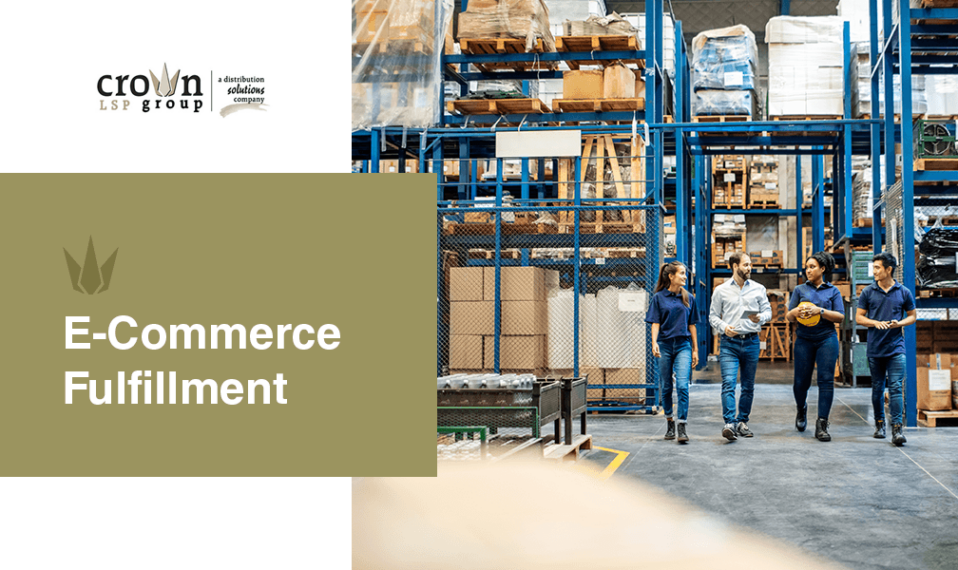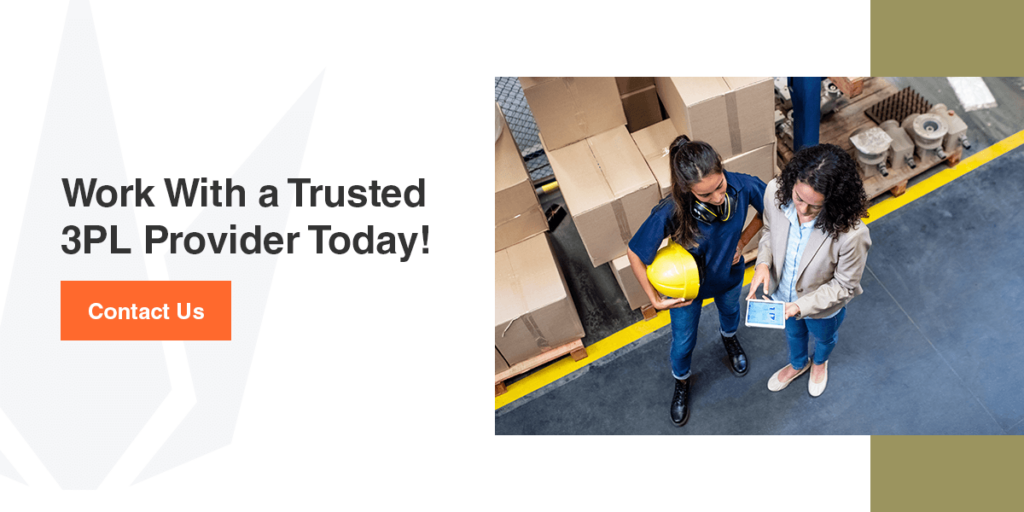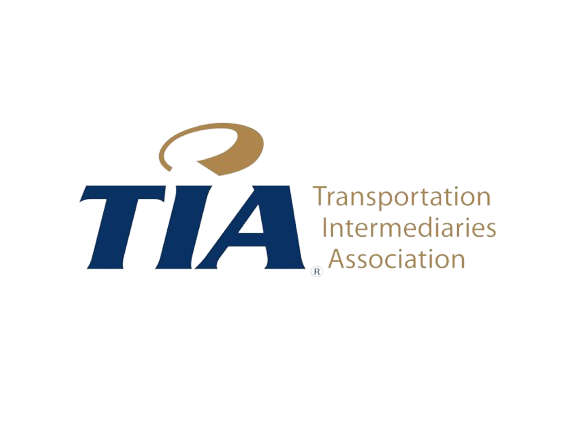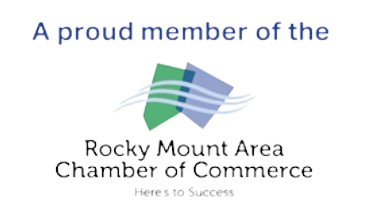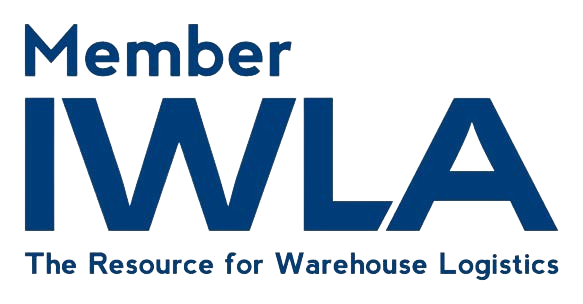To rake in consistent sales for your ecommerce business and remain profitable, you need more than a stunning website. You need a rock-solid and efficient ecommerce fulfillment strategy. By 2024 ecommerce will account for 21.8% of total retail sales worldwide. As more customers move online and ecommerce becomes very competitive, customers’ satisfaction will shift from product availability to speed and accuracy of order delivery. One poor experience and they may never return to your store.
Jump to Section
According to a study by Retail TouchPoints, 88% of customers say they’ll pay more for same-day delivery. And Amazon set the standard for ecommerce fulfillment with their addition of the next-day delivery option. What does this mean for online businesses and the consumer goods supply chain?
To satisfy your customers, stay competitive and profitable, you need a reliable and effective order fulfillment plan. Discover what you need to know about ecommerce fulfillment below. Find out how to select a fulfillment strategy that suits your unique business needs and how ecommerce fulfillment services can satisfy your warehousing, transportation and distribution needs.
What Is Ecommerce Fulfillment?
Ecommerce fulfillment — also called order fulfillment — refers to the process involved in delivering online orders to customers. The entire process consists of several stages that include receiving and storing inventory, order processing, picking and packing items, delivering products to the final consumer, and handling returns.
There are various strategies for fulfillment and the method you adopt for your business depends on the following factors:
- The size of your business
- The volume of orders you process
- The nature of your products
- The size of your products
- The location of your customers
From receiving the order to handing off the product to your customer, the ecommerce fulfillment process has many moving parts, no matter the strategy you choose.
Top 4 Trends Influencing Ecommerce Fulfillment
Ecommerce fulfillment is undergoing a lot of changes. Here are three trends influencing ecommerce fulfillment now and moving forward:
- Increased significance of ecommerce fulfillment: As more customers prefer buying online and getting their orders delivered to their doorsteps, the efficiency and speed of order delivery will become a major ecommerce success factor.
- Rise in automation and robotics in fulfillment: As the demand for fast order picking, packing and delivery increases, robots and automation are helping to meet this demand.
- Increased adoption of augmented reality: More augmented reality (AR) in ecommerce order fulfillment is helping warehouse operators navigate products, pick orders and fulfill orders easily and making the landscape more competitive.
- Better decision-making with data: Customer and market data is helping retailers and 3PL companies make better inventory forecasting decisions. And businesses that gather and make use of data will win.
At Crown LSP Group, we provide the resources to help ecommerce businesses stay flexible and responsive to trends and changes in their customer and market needs.
Related: The Future of Warehouse Automation & AI
What is Involved in the Fulfillment Process?
Whether you partner with a 3PL ecommerce fulfillment company, work with a dropshipper or fulfill your orders by yourself, the process follows the same pattern.
The online fulfillment process starts from when a customer places an order on your ecommerce site to when you deliver the accurate order to the customer. Typically, it includes the following steps:
1. Receiving and warehousing inventory
This stage of the fulfillment process ensures you have the space to house your inventory to fulfill customers’ orders later on.
Inventory warehousing involves moving your products to an ecommerce fulfillment warehouse or a self-run warehouse — a process called inbound logistics — and storing the products awaiting your customers’ orders. For small businesses, this could be a garage or a small store for storing products and accessing them to fulfill orders. But for a big and growing ecommerce brand that processes hundreds of orders daily, you need dedicated warehousing space or to partner with an ecommerce fulfillment center.
Effective inventory warehousing ensures the safety of your products. You can also consider your warehouse’s proximity to your customers for speedy and cost-effective order fulfillment.
2. Storing and managing inventory
This stage of the fulfillment process ensures you always have products on the shelf. Inventory management involves monitoring, forecasting and restocking inventory. The goal is to maintain an optimal level of product in the warehouse.
Inventory management is essential because too much inventory leads to poor cash flow, more payment for storage and the selling of outdated products. On the other hand, too little inventory leads to backorders and unsatisfied customers.
3. Tracking and managing orders
Order management covers everything about receiving and tracking orders from your customers. Proper order management involves integrating your sales channels — whether Shopify, Amazon, eBay or other merchants — with your warehouse management system to ensure real-time notification and processing of orders.
4. Picking, packing and shipping orders
The steps in the order fulfillment process involve picking, packing and shipping the right product to your customers. This stage in the ecommerce fulfillment process kicks in immediately once a customer places an order. Once the order is received, the correct product is picked from the warehouse, packaged and handed off to logistics for delivery. Proper fulfillment of online orders ensures picking and promptly delivering the accurate product.
5. Delivering products to consumers
Order fulfillment is the most important part of the ecommerce process because it puts you in direct contact with your customers. According to a study, 54% of customers would not place an order because of high delivery charges and 25% of customers won’t place an order if the delivery will take too long.
Efficient and satisfactory last-mile delivery leads to happy customers and positive word of mouth. Those benefits translate to more customers and revenue for your online business.
Small businesses can easily pull this off with self-fulfillment or partnering with a dropshipper. But big ecommerce brands who want a predictable and accurate order fulfillment process can guarantee this with a third-party ecommerce fulfillment company.
6. Returning orders
Also known as return management, reverse logistics involves processing returned products, redelivering the product, refunding your customers and returning the product to the store for reselling.
Thirty percent of everything sold online is returned, either because of damage or wrong product delivery. How you handle reverse logistics influences customers’ satisfaction and their desire to keep buying from your store.
For example, 92% of customers say they would buy more from a store with a satisfactory return procedure. And 79% of customers say they appreciate free shipping for return products.
Ecommerce stores receive the most returns because customers often do not have physical contact with the product before buying. But a laid-out return policy can mitigate product returns for your business.
Return logistics can become complicated. While small ecommerce businesses can easily process returns in-house, big ecommerce brands would need to dedicate plenty of time and resources to effectively handling return products. One advantage of outsourcing the fulfillment process is that it frees you from this burden and creates more time for you to grow your business.
Considerations for Choosing a Fulfillment Strategy
The order fulfillment process you choose will depend on several factors. Each strategy will have its unique advantages depending on the following.
1. The size of your business
Smaller businesses or start-ups may not need a comprehensive order fulfillment strategy. They likely don’t have the order base to support the cost of outsourcing fulfillment.
However, if your business is scaling rapidly and you find order fulfillment challenging, dropshipping or partnering with a third-party logistics (3PL) company like Crown LSP Group can provide you with a cost-effective way to save time and money.
2. The type of products you sell
The size and style of your products will directly affect your order fulfillment needs, especially when it comes to storage and shipping.
For example, products with hazardous materials have transportation limitations. Perishable items will have particular storage demands. The larger your items are, the more storage space you need and the more shipping may cost.
When choosing a fulfillment strategy, consider your product sizes and storage and shipping needs to fulfill them.
3. Your ability to keep track of your inventory
Inventory management includes tracking, storing, restocking and ordering new stock.
Selling out-of-stock merchandise could cost you a potential customer. However, ordering too many products could lead to unnecessary storage fees or a lack of storage space. If your items are perishable, this could lead to significant financial losses.
Dropshipping provides little to no control over inventory management, while a 3PL provider can take over inventory management so you can focus on marketing your business.
4. If you have warehouse space
Your choice of ecommerce fulfillment strategy might boil down to how and where you will store your products. Do you have the storage space for a reasonable stock level?
Small- to medium-sized businesses with smaller stock items may be able to store them in their basement or garage. Other times, the items may be too large or have specific temperature control needs. In those instances, outsourcing may make more sense.
Likewise, medium- to large-sized businesses with large order bases may benefit from partnering with a 3PL company as the cost of a bare-bones independent warehouse may not be financially lucrative.
5. How you will handle returns
As an ecommerce business owner, you will likely experience a high volume of returns, since customers cannot see the product before they buy. Customers love a solid return policy, so how you will handle returns is an important consideration. Processing returns includes providing a way for customers to send back damaged or unwanted items easily and for you to track the returns for stock planning.
If you manage returns in-house, you have control over the entire process, though it could be time-consuming, depending on the product type and the number of returns you receive. However, dropshipping affords the seller little to no control over the returns process and whether it will satisfy customers.
6. The cost of fulfilling orders
Your cost per order includes all costs associated with fulfilling an order, including fixed and variable costs, like the price you paid for the product, storage and shipping.
In some cases, outsourcing order fulfillment by dropshipping may make more sense if you want to keep the cost per order low as you won’t need to worry about the additional storage or shipping costs. You will only pay for the products you sell.
When you want more control over your products, in-house order fulfillment or partnering with a third-party logistics provider may make more sense.
Types of Order Fulfillment Strategies
The fulfillment strategy you adopt depends on your unique business needs. For big and growing ecommerce companies, there are several options including in-house fulfillment, dropshipping or choosing to partner with a third-party logistics company.
In-House Strategy
With in-house fulfillment, you do everything by yourself — warehousing, inventory and order management, order fulfillment and return management. You own your warehouse, purchase the needed insurance, software and equipment and hire and manage the staff needed. This process works well for small businesses but presents challenges for big and growing ecommerce brands.
Here are some things to keep in mind with an in-house strategy for your ecommerce business:
- Operating a fulfillment warehouse is expensive: For an ecommerce business processing lots of orders daily, you’d need significant warehouse space, warehouse staff, equipment and tools to operate an effective and smooth in-house ecommerce fulfillment strategy. You’d also need to purchase workers’ compensation, fire insurance, auto, professional insurance and other insurances to protect your workers and inventory in the event of an accident or incident. Those necessary extras require financial and managerial resources that can otherwise be used in expanding your business.
- Running a fulfillment warehouse demands time: Receiving inventory, storing, managing stock, packing and delivering orders accurately in-house demands excess time that can otherwise be used for marketing, working on your product or hiring the best talents for your business.
- Scaling in-house fulfillment is expensive and slow: Scaling an in-house fulfillment warehouse to meet your customer orders demands funds and takes time. To meet increasing customer orders even with a dedicated warehouse, you’d need to build or lease a larger warehouse, hire more staff and purchase the needed equipment. This process can take time and may not be fast enough to meet your growing customer orders. If sales drop, you’d end up paying for warehouse space and tools that you may never use.
Dropshipping
Most ecommerce businesses go for dropshipping as an alternative to a self-fulfillment strategy. With dropshipping, you don’t buy or store inventory. Instead, you simply put the product up for sale on your site. When you receive an order, you channel it to the dropshipper that operates a fulfillment center and delivers the product to your customer.
Dropshipping is a very fast ecommerce fulfillment method for small businesses, but it poses various challenges for large and growing businesses. With dropshipping, you have zero control over:
- Product quality: You do not control the quality of products delivered to your customers or the quality of services your customers receive. In cases of poor customer experience, you, not the fulfillment centers, bear the heat.
- Customization and branding: Since another company handles the fulfillment operations, fulfillment warehousing and order fulfillment, most times you do not control the customization and branding of the product.
- Inventory: You do not control your dropshipper’s stock level. If the dropshipper does not have the inventory needed to fulfill your customers’ orders, you may leave a lot of money on the table and grow a pile of disappointed customers.
Third-Party Logistics (3PL)
With a third-party fulfillment strategy, a 3PL provider handles all aspects of the order fulfillment process. This includes storing and managing your inventory, receiving and fulfilling customer orders and handling return logistics.
Partnering with a third-party fulfillment company ensures your inventory is properly stored and managed. You get up-to-date information on your inventory to ensure you have the right amount to meet your present and future customer demands.
Some of the common considerations when choosing a 3PL fulfillment strategy include:
- Cost-effectiveness: With a 3PL company, you only pay for the space you use and for orders processed. All other expenses are covered by the 3PL order fulfillment center and factored into your fees.
- Easy to scale: As your sales and inventory volume increase, you can easily pay for more space and staff. If sales decline, you can easily cut down on your expense. At every point, you pay as you use.
- Versatile warehouse space: You can easily move from one fulfillment warehouse to another to get closer to your customers, deliver faster and operate more cost-effectively.
- Access to skilled professionals: A 3PL company hires and manages warehouse and order fulfillment professionals so that you do not have to.
- Time to run your business: Outsourcing your order fulfillment carves out more time for you to focus on marketing, stocking the best quality product and growing your business.
Signs That You Should Outsource Fulfillment
Are you wondering if your ecommerce business could benefit from outsourcing order fulfillment? You may only need to outsource one or a few aspects. Our ecommerce fulfillment guide offers a few considerations to keep in mind.
1. Unpredictable sales cycles and seasonality
Frequent unused storage space, excess products with no room or unpredictable sales cycles can wreak havoc on your ecommerce business. Plus, an unfulfilled order could negatively impact customer retention. If it’s challenging to keep up with stock management, it may be time to consider outsourcing fulfillment with a 3PL provider.
A third-party logistics company will manage stock and track order trends to accurately predict the type and amount of stock you will need. Additionally, data insights from a 3PL provider can help you forecast sales dips so you don’t end up splurging on products you may not sell at certain times of the year.
2. Expansion of your target customer base
Nationwide and international shipping expenses can quickly add up, especially if you have a large, spread-out customer base. If you plan to expand your ecommerce business and ship across the U.S. or internationally, outsourcing fulfillment with a third-party logistics company may be the right order fulfillment solution.
A 3PL provider like Crown LSP Group can quickly and efficiently open a warehousing center nearer to your target customer base. We reduce shipping costs and ensure you have the stock available to support growth.
3. Costs that are challenging to predict or control
Most retail businesses have slower sales seasons, including ecommerce businesses. Depending on the products you sell, predicting or controlling costs associated with inventory and order fulfillment may be difficult.
For example, during slower months, you may not need as much storage space for your inventory. Unfortunately, unused warehouse space is lost money. Conversely, you may have an unexpected surge in sales without the stock, storage space or warehousing personnel you need to fulfill orders efficiently.
A third-party logistics provider can cost-effectively accommodate any unexpected dips or surges in order, storage and personnel demands.
4. Overstocking or understocking your inventory
Assuring you have the necessary kind and amount of stock at the right time is paramount to long-term business success. Overstocking could lead to increased storage costs while understocking could lead to a dissatisfied customer base if it happens too frequently.
It may be time to outsource order fulfillment if you’ve found it challenging to predict the amount of stock you need at specific points in the year. A 3PL company can monitor your inventory, track your orders and predict the amount and kind of stock you need and when.
5. Returns are becoming too hard to handle
Returns are inevitable for ecommerce businesses. There are many reasons your customers might return their products. The item could be damaged or different than they expected. Either way, if the seller is handling returns in-house, they are responsible for customer support, processing the return and restocking or updating inventory data.
Handling returns can quickly become time-consuming and unmanageable, especially if your company processes hundreds of orders or is scaling rapidly. A third-party logistics company can provide customer support, the process returns and manages inventory updates to dedicate your time to other aspects of your ecommerce business.
6. Not enough resources to handle the demand
When you can’t fulfill orders or meet customer demands, your business might suffer. Suppose you’ve found your company doesn’t have or can’t reasonably afford the warehousing facilities, technology or the number of personnel necessary to support a rapid influx of sales. In that case, it is time to outsource your ecommerce order fulfillment.
Whether you’ve experienced an unexpected surge or decline in sales, a third-party logistics provider will help you meet fluctuating storage needs, manage stock and have the staff to fulfill your orders and returns. You will only pay for the resources you need at any given time with the help of a 3PL provider.
7. You can’t focus on running your business
You must focus on the key responsibilities of successfully running an ecommerce business. Outsourcing will free up time, money and resources you can funnel into critical elements like marketing and customer relationship management. You can also maintain superior customer service.
Work With a Trusted 3PL Provider Today!
As a leader among third-party logistics providers, Crown LSP Group is your true distribution solution company. We provide customized supply chain services like warehousing, transportation and logistics, value-added services and on-site warehouse operations for your unique business needs. Our North Carolina location ensures cost-effective inbound logistics and speedy delivery to your customers anywhere in the United States.
We have been providing the best warehousing and last-mile delivery services for retailers like you for over 30 years. We provide all the inventory management and order fulfillment resources you need to run a successful ecommerce business. Our goal is to become your long-term logistics partner.
We know your business needs are unique. We’ll work with you to provide a customer ecommerce fulfillment strategy that benefits you and your customers in the long and short term.
Contact us today to discuss your order fulfillment strategy and request a free quote.

